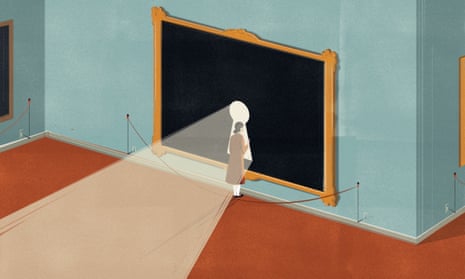Among the paintings in the Pio Monte della Misericordia, in Naples – the same splendid space that houses the famous Caravaggio devoted to the seven acts of mercy – there is a work that fascinates me and that I go and see whenever I can. It’s the figure of a nun with hands joined, eyes closed and an ecstatic expression. The cartouche on the right says it’s “Our Lady Of Soledad”, a 17th century work by an unknown artist.
Ever since adolescence, I’ve liked the term “unknown”. It means that all I can know of the person who made this painting is the work I have before my eyes. I find it a great opportunity. I can devote myself to the pure result of a creative gesture, without worrying about a big or small name. Before me is simply the composition of a human being who summoned his inventive energy and, rejecting countless other possible ways of using his time, fought with the raw material of colours to place on this surface – from within a tradition he had behind him, and with all the ability he was capable of, forgetting even himself – his personal figure of a woman praying.
The more I look at the nun, the better I know the unknown artist of the 17th century. Not through biographical facts, not through his life story, but through his expressive strategies. In them I find inscribed in full another story – his story as an artist, which is a story of aesthetic choices, of compositional intelligence, of the grammar and syntax of an image, of feelings given shape. In the work of art, biography and autobiography have a truth completely different from that which we attribute to a CV or an income tax return. In that space there is, there has to be, a freedom of invention that allows one to violate all the agreements about truth in everyday life. To be clear: the artist of Our Lady Of Soledad is unknown to me only on the historical-biographical level. He is very well known to me, on the other hand, in the exercise of his function as an author – so well known that I could give to that function, for convenience, a name, for example, a female name.
It would not be a pseudonym, that is, a false name; it would be the only true name used to identify her imaginative power, her ability. Every other label would be problematic, would bring into the work precisely that which has been kept out of it, so that it would stay afloat in the great river of forms. Naturally the game could also be extended to artists whom, wrongly, we don’t consider “Unknown”. If I had to give to the creative act of Seven Acts Of Mercy the name Caravaggio, and to the biographically determined person, the name Michelangelo Merisi, I would choose to spend the greater part of my time with Caravaggio, and not with Merisi. Merisi would blur my vision.
- Translated by Ann Goldstein
